A three-day drive from Melbourne to Sydney along the Victorian and New South Wales coasts isn’t exactly a tribute to slow travel, with enough attractions and gastronomic pleasures along the route to fill a week. But allowing for time to dwell in a few well-chosen locations, this road trip offers an enticing taste of regions like Victoria’s East Gippsland and the Sapphire coast in the far south of New South Wales.
It will also draw you into wild national parks like Croajingalong in Victoria and Ben Boyd, over the border, near Eden. Coastal lakes in Gippsland that constitute Australia’s biggest inland waterway, and long, unspoilt beaches, like Ninety Mile form the journey’s dramatic backdrop. And the foreground isn’t bad either, particularly as the route twists and curls through the thick forests around the border.
The route
All the action of the drive is around the A1 Princes Highway, which begins in central Melbourne and continues all the way to Sydney, a distance of 1032kms not including side-trips. The only busy sections are within an hour’s drive of start and finish but otherwise the route is largely traffic-light with attractions providing regular pit-stops.
Main attractions
Unless you have time to detour to the Mornington Peninsula or the Wilson’s Promontory, there’s not much to see along the early part of the drive. Concentrate on getting to the Gippsland lakes further east. Take your time at the excellent Krowathunkoolong Keeping Place in Bairnsdale to learn about the Gunnai/Kurnai people’s connection with the region that dates back tens of thousands of years.
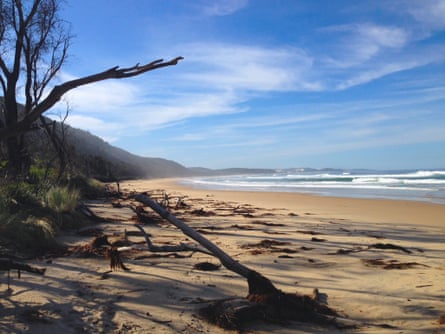
Shortly before reaching Lakes Entrance, the village of Metung is a lovely base from which to explore Gippsland’s waterways, with several good eateries and boat hire. Nearer to the border, two coastal parks, Cape Conran and Croajingalong, encompass windswept beaches, quiet coves, rocky headlands and significant native wildlife. On either side of the Victoria / New South Wales border are historic lighthouses, Point Hicks in Croajingalong and Greencape, south of Eden, in Ben Boyd national park. Both are top whale watching spots.
Whale watching is a prime feature of much of the NSW south coast, particularly between September and December when humpbacks are returning to Antarctica with their calves. In Eden, a whaling centre until the 1930s, a siren is sounded every time there is sighting out in Twofold Bay. Eden also holds an annual whale festival (on 1 November in 2014).
Along the Sapphire Coast, a scenic drive links the seaside towns of Merimbula, Tathra and Bermagui and the Mimosa Rocks national park, with its secluded beaches, coastal walking trails and the eponymous lichen-covered boulders. Beyond Bermagui, a short detour inland leads to Central Tilba, a National Trust-listed village full of nick-nack shops and cheese and fudge stores.
The main Princes Highway continues north behind lakes, crossing rivers and skirting the towns of Narooma, Moruya and Bateman’s Bay. A little further on, a turn-off leads to Pebbly Beach and its famous “surfing kangaroos”, converging on the ocean to nibble on vegetation.
Three hours south of Sydney, Jervis Bay has everything from dazzling Hyams beach, a contender for Australia’s whitest stretch of sand, to dolphin watching cruises and some of the state’s top diving spots. The road trip reaches a theatrical denouement with a drive across Sea Cliff Bridge, swerving for 680m around the cliffs, north of Woolongong.
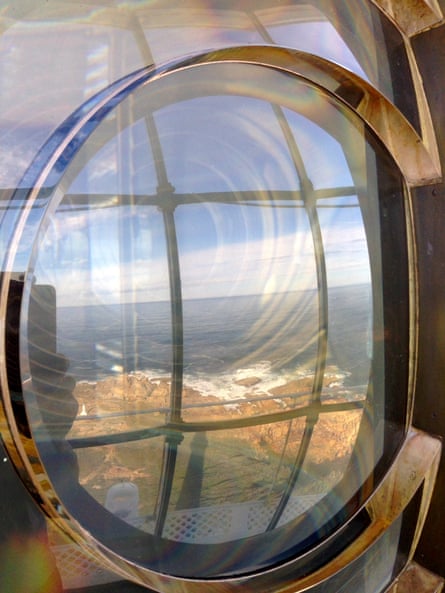
Three must-dos
Skipper your own boat on Gippsland Lakes: It takes five minutes instruction from Riviera Nautic at Metung (rivieranautic.com.au) to prepare for a sunny morning put-putting among these calm waterways. In three hours I get as far as Barrier Landing, where I stroll through dunes onto Ninety Mile beach, which I have to myself. Back on the lake, I dawdle past squadrons of pelican, black swans and dolphin pods. It’s a relaxing gear change from driving the coastal road.
Trek to Point Hicks lighthouse: Getting to the start of this walk, along an unsealed 45km road through Croajingalong’s forested slopes, is part of the adventure. The 4.5km return trek winds behind beaches framed by granite boulders before ascending to the lighthouse, reaching 37m above a rocky headland that was Captain Cook’s first sighting of the Australian mainland, in April 1770. Weekend tours at 1pm.
Visit the Eden killer whale museum: “Which is the second most intelligent creature on the planet?” asks guide Barry Smith during our tour before answering his own question: the killer whale. There is plentiful evidence for his claim, including the symbiotic relationship between killer whales (actually the largest dolphins) and man going back to early Koori habitation of this area.
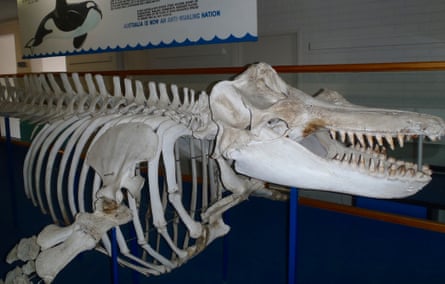
As European settlers arrived in the 19th century they began exploiting that connection to help them harvest baleen species to supply oil for lighting and other industrial uses. The local killer whale pod, marshalled by their matriarch, would lead larger whales like humpbacks into Twofold Bay, leaving them exhausted and at the mercy of the whalers’ harpoons. In return, the Killers were fed the humpback’s tongue and lips (their favourite parts). Details: killerwhalemuseum.com.au (entry $9).
Where to eat
Taking a break on the initial section of the road from Melbourne is made all the more attractive thanks to Gippsland’s only hatted restaurant, Neilsons in Traralgon. Set in the front-room of a period Californian bungalow, innovative dishes include Campari cured salmon with dill, squid ink, local prawns and turnip and a crunchily textured pot roast cauliflower with lemon myrtle, hazlenuts, leek oil and pear vinegar. Presentation on earthy stone slabs rounds off a thrilling gastronomic experience.
It’s hard to go wrong eating anywhere in the little but lively lakeside village of Metung. Bancroft Bites is a convivial café delivering fresh, locally sourced fare morning, noon and night. The sticky date pudding is particularly irresistible. Across the street is the Metung Galley where the Middle Eastern eggs topped with spinach, feta and dukkah set you up beautifully for a day on the lakes. The lakefront Metung Hotel has one of Australia’s finest pub settings and top-quality tavern food and wine, including spicy seafood laksa, packed with fresh oysters, mussels, scallops, prawn and salmon.
Further along the East Gippsland coast near Cape Conran, Marlo Hotel is the place for sunset drinks over the Snowy River mouth. Over the border into New South Wales, A Taste of Eden is one of a cluster of eateries in Eden’s Snug Cove harbour, good for sustainably sourced local fare. Fans of bivalve mollusks shuold follow the oyster trail from Pambula to the Shoalhaven for regular tastings. Along the Sapphire Coast drive, the Wharf Locavore is a rustic gourmet eatery on historic Tathra quay. Bermagui has harbourside modern Italian at Il Passagio and the Gelati Clinic for afters.
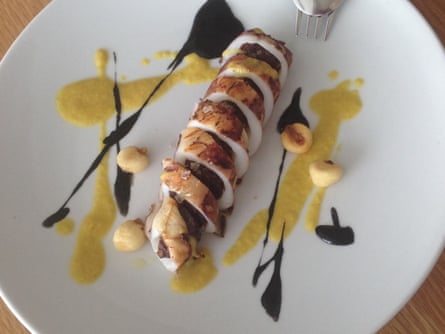
Further north, three hours drive from Sydney, Brit Rick Stein has established a small kingdom at Bannisters in Mollymook, his signature restaurant paying homage to the South Coast seafood that he’s loved since first visiting in the 60s. Even the bar food is excellent. And an hour closer to Sydney, in previously-unappealing Nowra, another chef, Dave Campbell, has conjured South American-themed magic at Wharf Rd restaurant beside the Shoalhaven River. From ceviche to my first (but not last) taste of Alpaca, served kebab-style, to Jervis Bay squid stuffed with black pudding and cancha corn nuts and squid ink, Campbell’s tasting menu is an organic tour-de-force.
Where to stay
The Moorings in Metung are well-equipped luxury waterfront apartments in the heart of Metung village. Stay in a low-impact tent pitched amid coastal banksia above the beach in the 11,000-hectare coastal park, Cape Conran Wilderness Retreats, where nighttime visitors include potoroos and wombats. In-tent massage from a local therapist and proper coffee machine in the adjacent kitchen add luxurious touches to the bushcamping experience.
Million-dollar ocean views through huge picture-book windows, wraparound decks, spa baths and, at Sydney prices, a million dollar’s worth of personal space. That’s just the rooms at Bannisters Point Lodge, Mollymook. Then there’s the food and the bar beside the infinity pool. If only Rick Stein himself were around to throw a shrimp on the barbie, Bannisters would be south coast perfection.
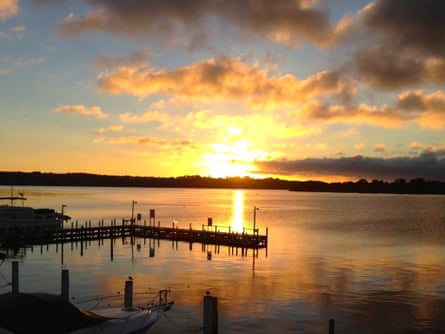
When to visit
All year, but best in winter for empty beaches and whale watching and early December before school holidays for sunshine, al fresco dining and plenty of accommodation options. Further information at inspiredbygipsland.com.au, visitvictoria.com and visitnsw.com
Guardian Australia travelled with Tourism Victoria, Destination Gippsland and Destination NSW.
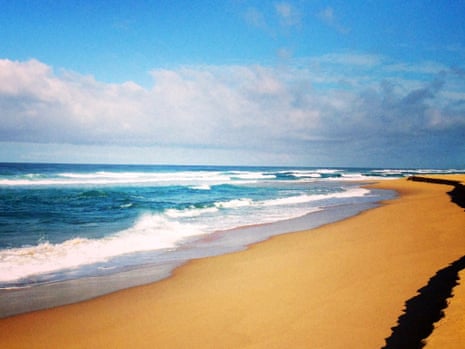
Comments (…)
Sign in or create your Guardian account to join the discussion